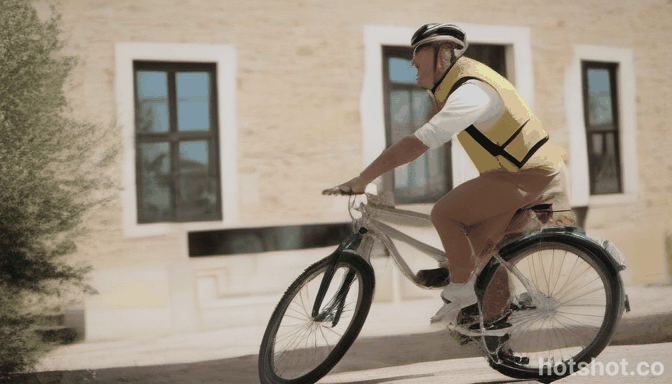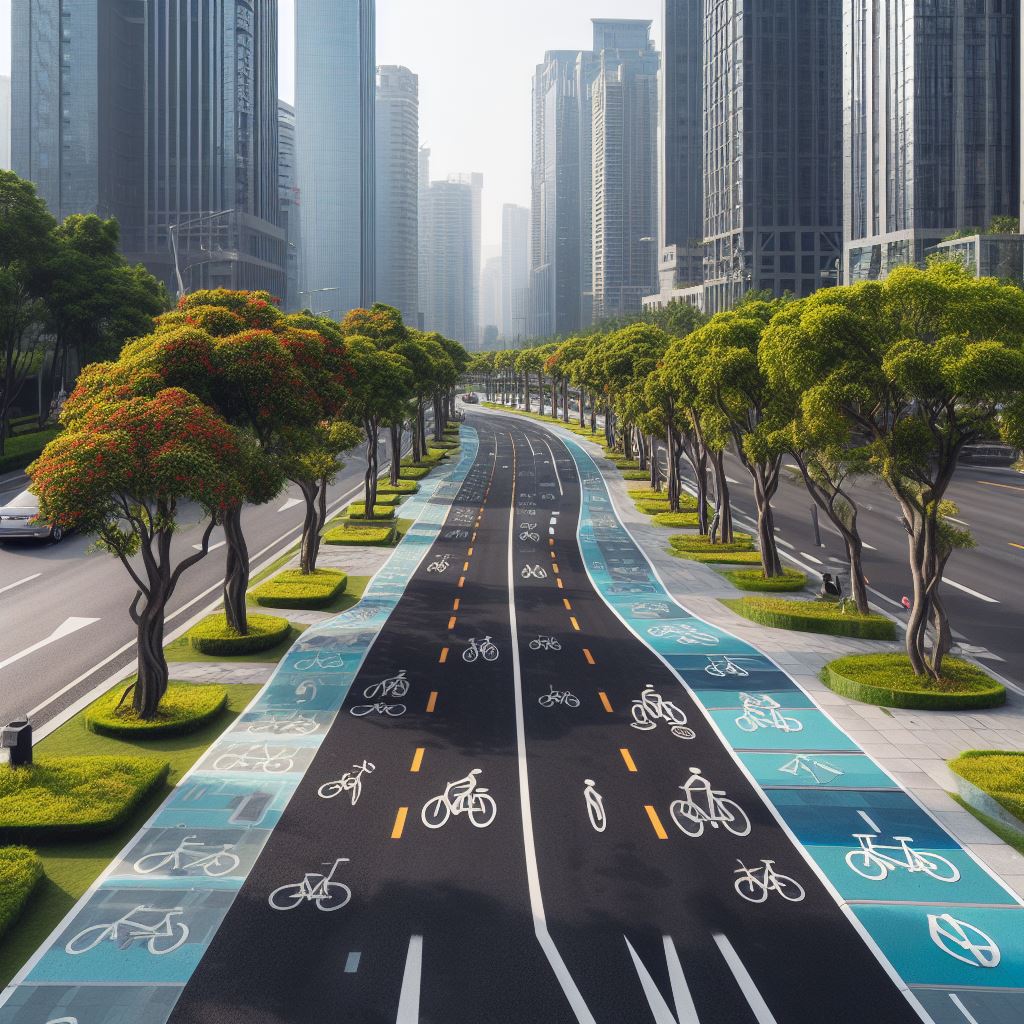
Welcome to our file on uses of bike and urban cycling developments in France. Discover key data, comparisons, trends and more to better understand therise of the bicycle dans le pays.
Table of contents
Cycling is gaining popularity in France, becoming a preferred mode of transport for many citizens. This trend can be explained by several factors: the search for sustainable modes of travel, the promotion of health and the desire to reduce urban congestion.
Indeed, the year 2022 is undoubtedly a remarkable year for the growth ofuse of the bicycle. The latest reports show that the metropolis recorded no less than 42 million bicycle trips over the past year, marking an advance compared to the 37 million recorded in 2021.


To begin, it is appropriate to define the terms “ cycling facilities ". These latter include the cycle paths, green ways, cycle lanes, two-way cycle routes and shared bus lanes. All of these developments are calculated in km: in September 2022, there were 76 573 km.
Here are the developments observed between 2017 and September 2022 for cycling facilities. It is interesting to compare the differences between each year:

It is undeniable that the trend has been towards reduction since 2021, and this reduction seems to persist in 2022, at least according to current data. The figures are expected to increase slightly in the fourth quarter, but are unlikely to exceed 5000 km given the current pace.
Discover here a comparison of the main French cities in terms of kilometers of cycle paths. This data provides insight into each city's commitment to cycling as a mode of transport.
Marseille

Lyon
Bordeaux
Use of Bicycle: Bordeaux is renowned for its commitment to cycling. THE cycle paths in Bordeaux are well laid out and the introduction of bike sharing have contributed to making cycling a popular choice for getting around the city
Strasbourg
Lille
Toulouse
Montpellier
General observations :
In short, these large French cities offer a network of cycle paths adapted to the needs of their population, thus contributing to improving the quality of urban life and reducing road congestion.

With transportation disruptions due to strikes and the Covid-19 outbreak, many French citizens have begun to consider cycling as a viable alternative. Is this an indicator of the emergence of a real revolution cyclist ?
Indeed, the French are rediscovering the pleasure of pedaling. Long relegated to second place by the car in the 1970s, the bicycle has attracted renewed interest for about a decade.
Watch this captivating video (produced by Lumni.fr) illustrating the rise of cycling as the French people's preferred mode of transport.
It is essential not to forget the bike parking when developing cycle paths for several crucial reasons.
First, these facilities provide a safe and convenient place for cyclists to park their bikes before continuing with their day. This encourages more people to choose cycling as a means of transportation because they know they will have a place to leave it safely.
In addition, by reducing the risk of theft or vandalism, bicycle parking facilities contribute to the protection of cyclists' property.
Finally, by reducing illegal parking of bicycles on sidewalks and public spaces, these installations also contribute to improving the quality of urban life by creating a more orderly and pleasant environment for all citizens.
Bicycle parking spaces are therefore a key element in encouraging the use of bicycles as a means of transport and in making our cities more friendly and environmentally friendly.
In the current context of transition towards more sustainable mobility, the bicycle parking in business plays an essential role in encouraging the use of bicycles as daily means of transportation. Many companies in France now recognize the importance of facilitating the use of bicycles by their employees by implementing parking infrastructure appropriate. By offering secure bicycle parks and accessible, businesses help reduce road congestion, carbon emissions and promote the well-being of their employees. This initiative is part of a global approach aimed at promoting sustainable mobility, while creating a healthier working environment and reducing the company's carbon footprint.
There are supports and incentives available for businesses wishing to finance the installation of bicycle parking facilities. For example, the Alvéole Plus grant, acronym for “Learning and Local Cycling to Offer Freedom of Energy-Efficient Mobility”, supported by the FUB, is part of the CEE (Energy Savings Certificate) systems developed by the Ministry of Ecological and Inclusive Transition. It helps with the financing and installation of equipment bike parking, up to 60% of the amount of expenses.
Communities have a key role in promoting sustainable mobility, and providing space for cyclists is part of their obligations. They are required to respond to the changing transportation needs of their population. The growth of cycling as a popular mode of travel is undeniable, and communities must support this development.
In addition, they are often encouraged, or even constrained, by national laws and regulations such as, for example, law LAURA, Law on Air and Rational Use of Energy and law LOM, Mobility Orientation Law which focuses on mobility and the environment aimed at reducing carbon emissions and improving air quality. The LOM is a more recent and more comprehensive law focused on reforming mobility policies, while the LAURE is an older and more specific law, focused on air quality and rational use of energy.
These laws and regulations contribute to the establishment of a favorable environment for cyclists in France by defining standards, incentives and financing mechanisms for urban cycling development. Communities must rely on these provisions to develop infrastructure favorable to bicycle mobility in their respective areas.

Stretching over nearly 1 kilometres, Scandiberia is undoubtedly the longest cycle path in France. Its main asset lies in its ability to connect the 20 departments scattered across France. You have the freedom to choose any starting point to reach your final destination. The choice of itinerary will allow you to personalize your adventure to your liking. This is the ideal route to discover emblematic cities such as Paris, Bordeaux and Tours, while immersing yourself in picturesque landscapes where countryside, castles and green nature intertwine harmoniously.
Here are some downloadable documents on urban cycling developments and the greenway.
📄 Bicycle parking in buildings : This guide represents an instrument facilitating the design of spaces dedicated to secure bicycle parking in buildings. It was produced in 2022 by Violette Baccou and Yohan Planche.
📄 The greenway, a link in an urban cycle and pedestrian network : “What type of development can be marked as a greenway? What is the point ? Is it only a question of creating new routes or also of changing the status of existing developments?”
These are the questions that this sheet answers, written by François Tortel in January 2023.
📄 A future for cycling in medium-sized cities : This synthesis aims to provide a diagnosis and propose measures to promote cycling in medium-sized cities, using a three-dimensional qualitative approach. This “solutions guide” was distributed by ADEME in May 2023.

This file on cycling in France highlights the significant evolution of cycling culture in the country. Of infrastructure development to usage trends, constraints and challenges, it is clear that the bicycle is increasingly establishing itself as a mode of transport essential and a valuable asset for thesustainable future from France.
The growing popularity of cycling, illustrated by the spectacular increase in traveling by bike in recent years, demonstrates the importance of cycling in the daily life of the French. Major cities, from Paris to Marseille, from Lyon to Lille, have invested massively in the creation of cycle paths secure and in promoting the use of bicycles.
Le electric bike (VAE) has opened up new opportunities for wider use of bicycles, particularly for commuting. However, challenges persist, particularly with regard to road safety, parking, and the development of hilly or mountainous areas.
The future of cycling in France is promising, but it requires continued commitment. Awareness, education, and additional investments in cycling infrastructure are essential to ensure a favorable environment for cyclists of all levels.
Cycling is not limited to a simple mode of transport. It embodies a vision of sustainability, health and connection to the environment which is becoming increasingly important in French society. It is clear that cycling has an essential role to play in the transition towards a more environmentally friendly and people-centered future. sustainable mobility In France. Saddle up for a better future!


Vélogalaxie designs and markets bicycle racks, bicycle-motorcycle shelters , scooter garages, repair & washing stations, terminals VAE, bicycle lockers…with town halls, communities, construction, mass distribution and private companies
The department of Hérault active for the soft mobility https://t.co/lvFh4ydTlY
— Vélo Galaxie (@VeloGalaxie) April 25, 2023
5 reasons to choose cycling in 2023 https://t.co/cvig2PzNcI
— Vélo Galaxie (@VeloGalaxie) February 28, 2023
Olympic Games in Paris, the Olympic sites fitted out for bicycles https://t.co/EpuYBgw53i
— Vélo Galaxie (@VeloGalaxie) March 20, 2023